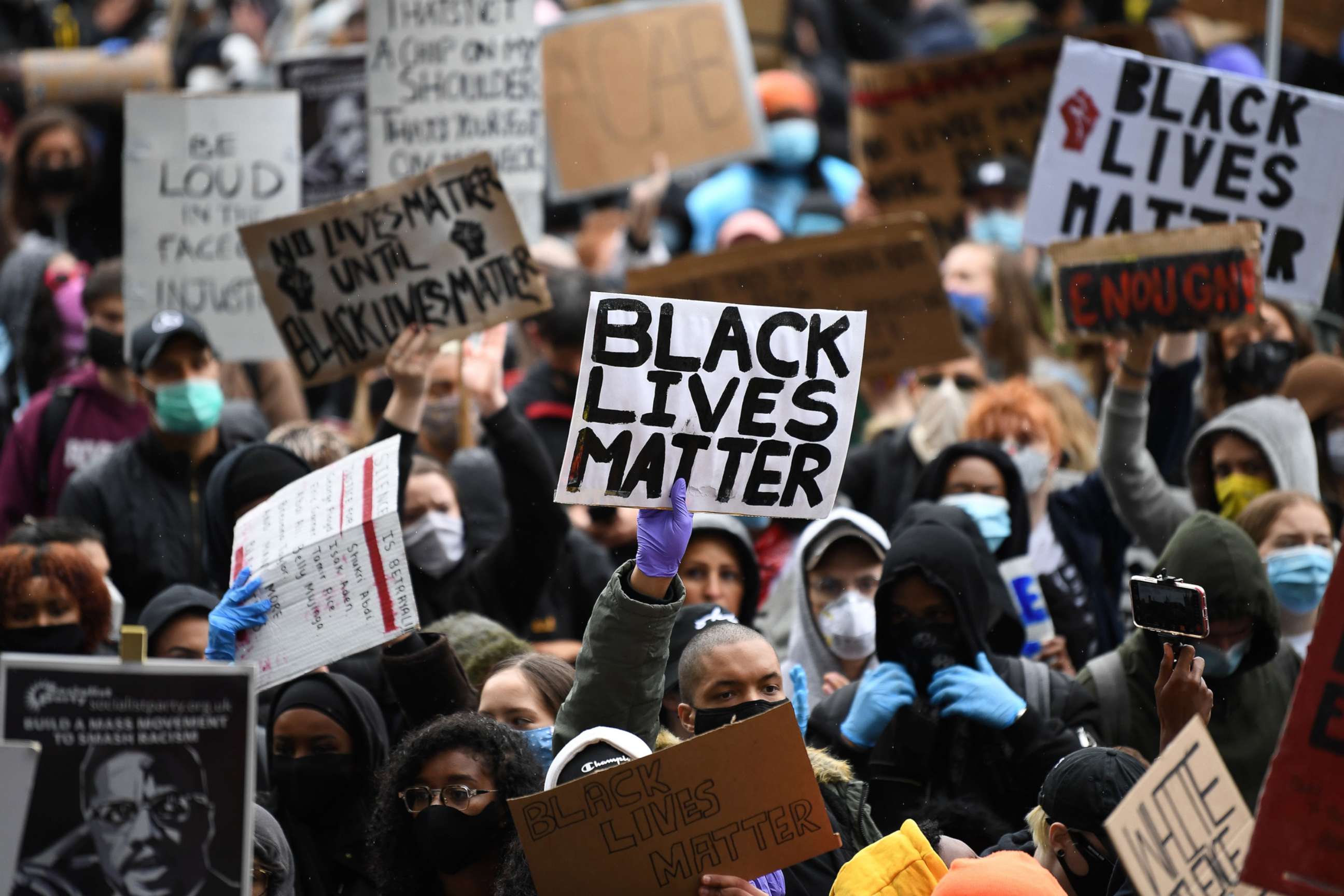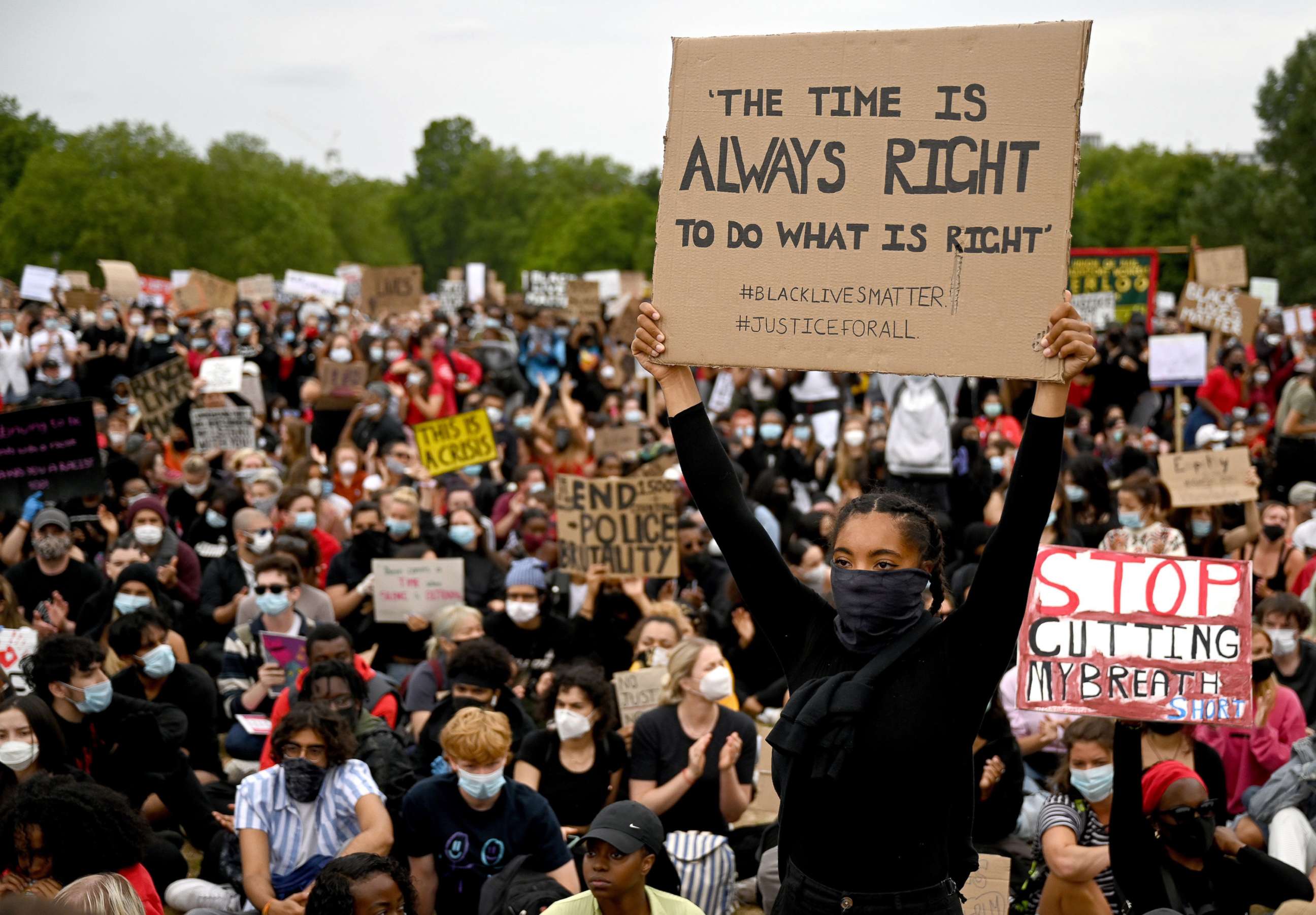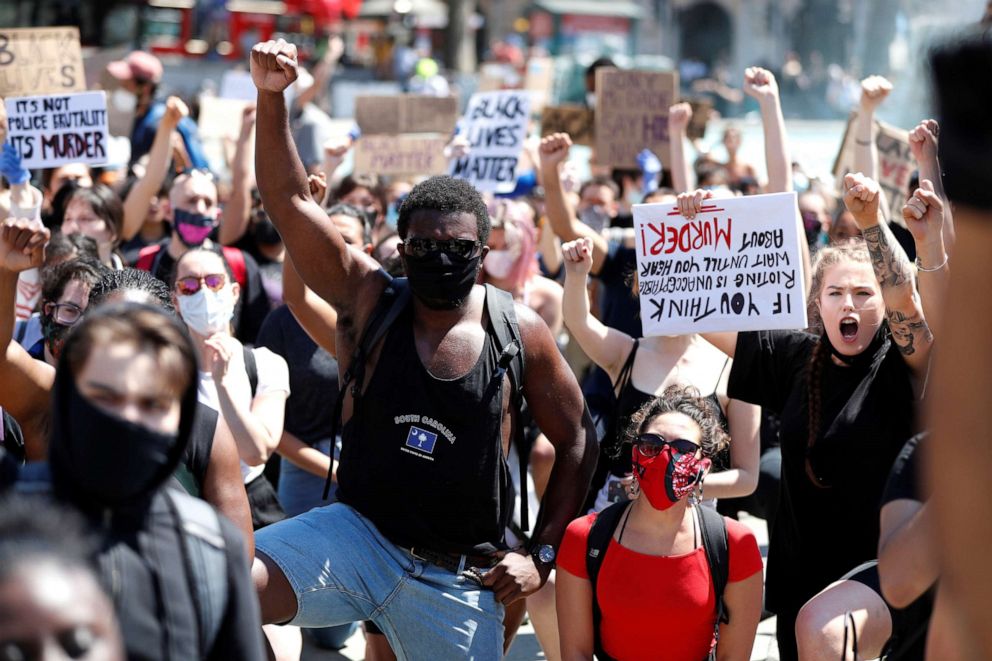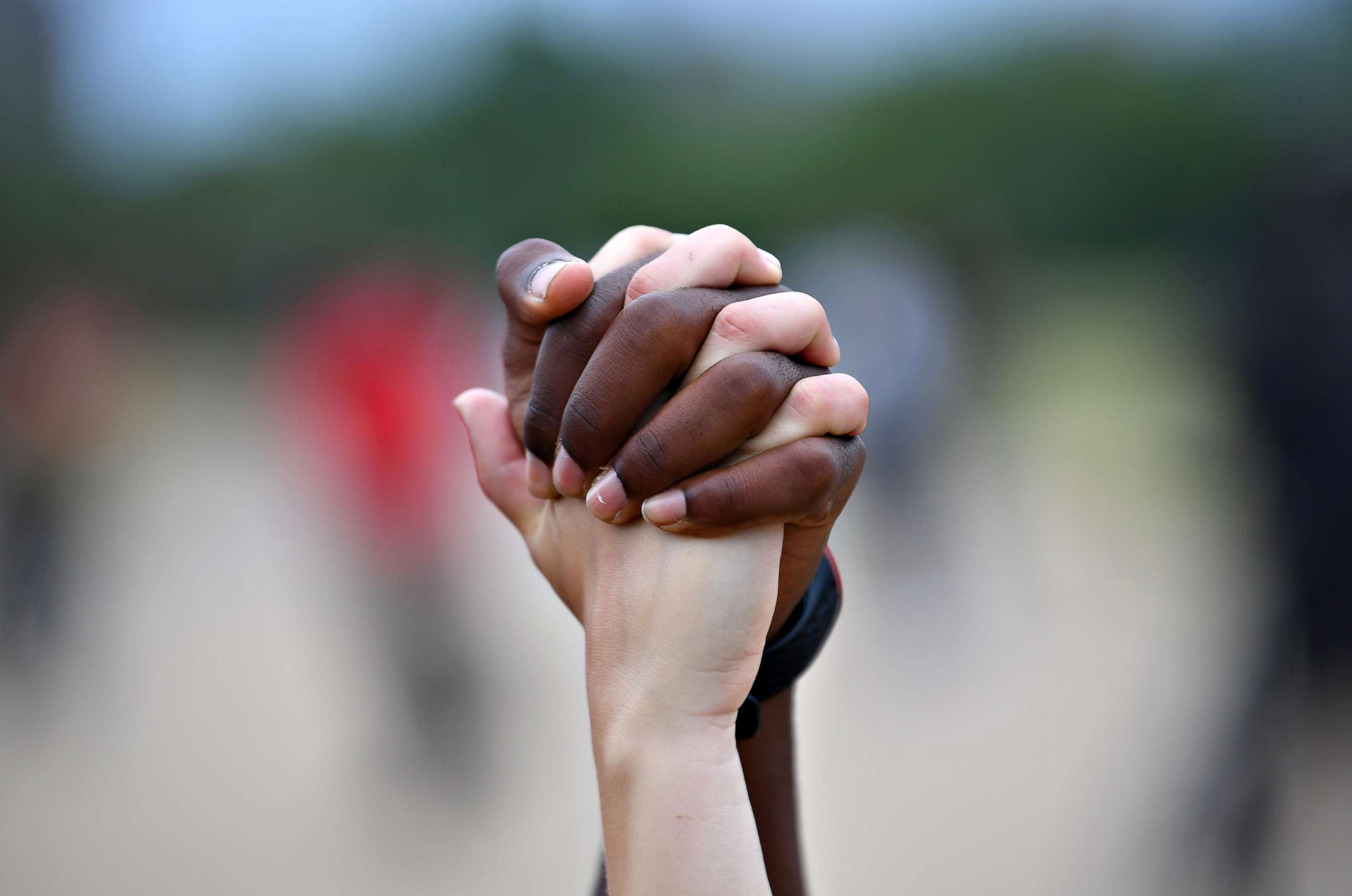How do British black deaths in police custody compare with the US?
British protesters support Black Lives Matter, what's the situation in the U.K.?
LONDON -- While protests erupt across the U.S., crowds have taken to the streets of Britain. Many carry banners bearing George Floyd's name and face -- but there have been British names on placards too.
Speaking on Sky News, Marcia Rigg -- whose brother Sean Rigg died after being arrested in 2008, said, "I welcome the protests, but where have the protesters been all these years in the U.K.? They've never supported us enough, and I would like that support again from the U.K. From the public to support us as well as globally in spite of this [pandemic] we need to clean up our own backyard."

The U.K. has tight gun restriction laws. Guns are illegal to possess without proper licenses. A consequence of having a largely unarmed public is that British beat police mostly patrol U.K.'s streets armed with little more than a baton or stun gun.
"There may be fewer guns issued in the U.K., but there is still a war against black people," said a founder of the British Black Lives Matter group -- not officially affiliated with the American movement.
Cases of police brutality and deaths in custody have long been issues for campaigners in the U.K.
Are black deaths in police custody in the U.K. comparable with the U.S.?
Figures from 1990 listing the number of deaths in England in police custody show that the proportion of black and minority deaths is roughly equal to the demographic breakdown.

Looking within the minority breakdown -- the figures show that black deaths (excluding other minorities) on their own were overrepresented in the number of deaths in police custody compared to the national demographic.
Furthermore, independent analysis of the figures found that where use of force or restraint was applied, black and minority individuals were twice as likely to die in police custody than white individuals.
What story does the data tell us about black deaths in custody?
Methods of data collection and classification are important factors to consider. Different watchdogs and agencies compile numbers differently. The national police watchdog counts deaths in custody only where arrests were made, and excluding deaths while in prison - other agencies or campaign groups cast a wider net.
As a report by another police watchdog group found, figures included people who had died after being reported missing to the police: "The police generally did not have direct contact with the deceased in these circumstances."
The watchdog also found a large prevalence of mental health disorders among the number of people who had died while in, or following, police custody or contact. Figures from 2018-2019 show that over two-thirds of the people who died were found to have mental health disorders.
In many cases, emergency calls motivated by a concern of welfare were directed to police, who arrived first on the scene -- and not social care or medical workers specifically trained to deal with mental health emergencies.
What have investigations into deaths in police custody found?
David Lammy, a lawmaker for Tottenham in north London, led a review into black and minority deaths in police custody, that released its findings in 2017. He found that while society generally was becoming more tolerant, "…Some prejudice that was overt, is now covert."
Part of Lammy's review looked into the controversial 'stop-and-search' policy, which has been blamed for worsening race relations between the police and the black community. Analysis of government data into 'stop-and-search' found that black people were seven times more likely than white people to be targeted for spot checks looking for drugs or weapons.

Lammy concluded that black and minority individuals "…still face bias, including overt discrimination, in parts of the justice system. Prejudice has declined but still exists in wider society -- it would be a surprise if it was entirely absent from criminal justice settings."
Another review found that the "stereotyping of young Black men as 'dangerous, violent and volatile' is a longstanding trope that is ingrained in the minds of many in our society. People with mental health needs also face the stereotype of the mentally ill as 'mad, bad and dangerous'. There is therefore a particular concern with what INQUEST describes as 'double discrimination' experienced by Black people with mental health issues."
Two of the widely cited cases of black deaths in police custody are Kingsley Burrell and Sean Rigg. Both suffered from mental health issues.
Kingsley Burrell, 29, died in 2011 from cardiac arrest days after being detained by West Midlands Police in northern England. Three officers were cleared of allegations of using excessive force -- one of whom was sacked for gross misconduct for not removing a spit hood placed on Burrell during his detention and transfer to a psychiatric ward.
Sean Rigg, 40, was a physically fit musician -- but died from cardiac arrest and asphyxia after being detained by police in Brixton, south London in 2008. He suffered from paranoid schizophrenia and after emergency calls responding to reports of aggressive behavior, he was restrained and transported to a local police station in a van, dying shortly after arrival.

The police involved in Rigg's arrest were cleared of allegations of misconduct last year, despite an inquiry ruling their methods of restraint had "more than minimally contributed to his death."
The decision was "traumatic" for Marcia Rigg, who has spent over ten years campaigning for justice following her brother's death.
"The death of Sean Rigg has always been a matter of regret for the Met, along with the additional stress suffered by both the Rigg family and the officers involved caused by the delay in bringing matters to a more timely conclusion," a Met Police spokesperson told ABC News,
"This is not the same Met as it was 20 – 25 years ago. We have improved how we investigate and respond to crimes; how we engage and work with our communities; how we develop and support our own staff and have made huge improvements in becoming a more representative workforce. We scrutinized this case to learn how we can expedite matters more swiftly in future while maintaining a full, thorough and transparent process," the spokesperson said.



